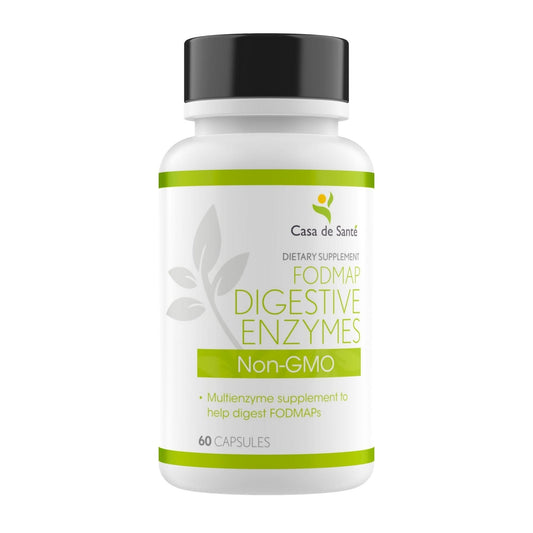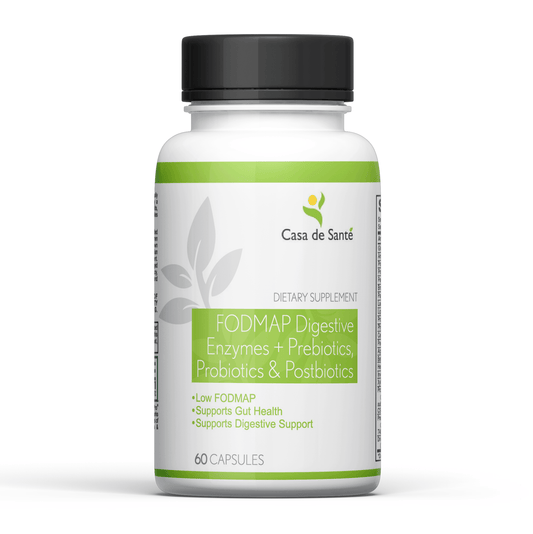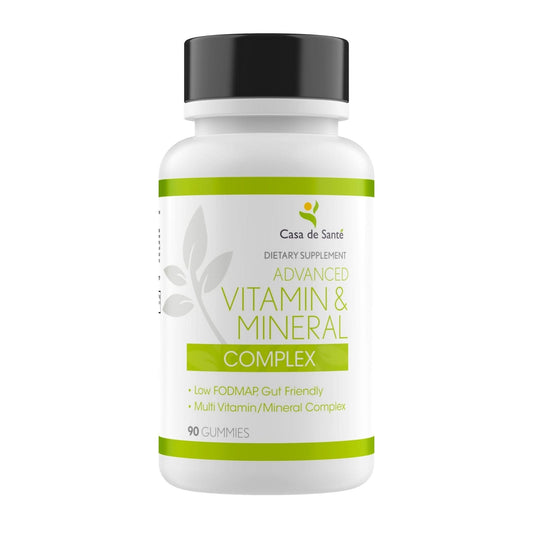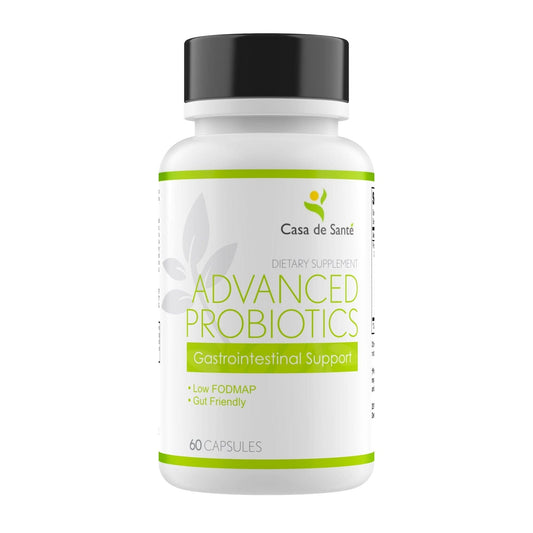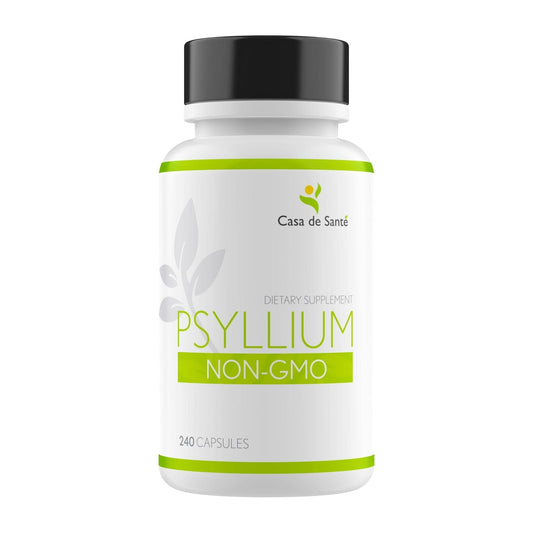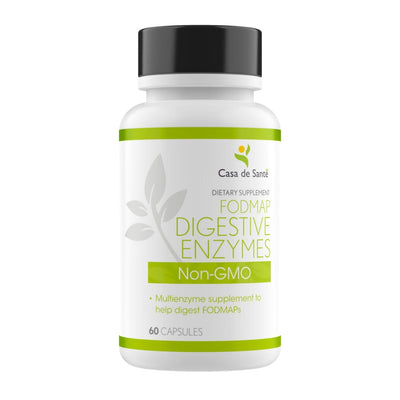Exploring FODMAP Diet Foods: A Comprehensive Guide to Eating Well
Ever wondered why some foods just don't sit right with your stomach? You're not alone. Many people struggle with digestive issues, and that's where the FODMAP diet comes in. It's all about finding the right balance of foods that are gentle on your gut. This guide is here to help you figure out which foods to embrace and which to skip, making it easier to enjoy your meals without the discomfort. So, let's dive into the world of FODMAP diet foods and discover how to eat well without the worry.
Key Takeaways
- The FODMAP diet focuses on reducing certain carbs that can upset your stomach.
- High-FODMAP foods include certain fruits, dairy, and grains.
- Low-FODMAP options are available for veggies, proteins, and snacks.
- Meal planning can help you stick to a FODMAP-friendly diet.
- Always check food labels to avoid hidden FODMAPs.
Understanding FODMAP Diet Foods
What Are FODMAPs?
FODMAPs stand for Fermentable Oligosaccharides, Disaccharides, Monosaccharides, and Polyols. These are short-chain carbs that some people struggle to digest. When these are not absorbed properly in the small intestine, they travel to the colon where they're fermented by bacteria, causing symptoms like bloating and gas. For those with IBS or similar digestive problems, this can be a real pain, literally.
Common High-FODMAP Foods
Many foods we enjoy daily are high in FODMAPs. Here's a quick list:
- Fruits: Apples, pears, and watermelon.
- Vegetables: Garlic, onions, and asparagus.
- Dairy: Milk, yogurt, and soft cheeses.
- Grains: Wheat and rye products.
- Sweeteners: Honey and high-fructose corn syrup.
Benefits of a Low-FODMAP Diet
Switching to a low-FODMAP diet can be a game-changer for many. It helps reduce symptoms like bloating, stomach pain, and diarrhea. This diet isn't about cutting out entire food groups forever—it's more about learning what your body can handle.
"A low-FODMAP diet can bring relief and improve quality of life for those struggling with digestive issues. It's a way to eat comfortably and still enjoy a variety of foods."
Navigating Low-FODMAP Vegetables and Fruits
Low-FODMAP Vegetables to Enjoy
Eating vegetables is a must, even on a low-FODMAP diet. Luckily, there's a good variety you can enjoy without worry. Here are some veggies that are easy on the gut:
- Carrots: Crunchy and sweet, they're perfect for snacking or adding to meals.
- Bell Peppers: Go for the green ones; they're low in FODMAPs.
- Spinach: Fresh or cooked, it's a versatile green.
- Zucchini: Great grilled, roasted, or spiralized into noodles.
- Eggplant: A hearty option for roasting or grilling.
Fruits That Fit the FODMAP Diet
Fruits can be tricky on this diet, but there are still plenty of tasty choices. Consider these low-FODMAP fruits:
- Strawberries: Sweet and juicy, they're a perfect snack.
- Blueberries: Great in oatmeal or on their own.
- Kiwi: Tart and refreshing, plus high in vitamin C.
- Pineapple: Sweet and tropical, just keep portions in check.
- Grapes: Easy to grab and go, they make a tasty snack.
Tips for Selecting Fresh Produce
Selecting the right produce can make a big difference in your diet. Here are a few pointers:
- Check for freshness: Look for bright colors and firm textures.
- Buy in season: Seasonal produce is usually fresher and tastier.
- Store properly: Keep fruits and veggies in the right environment to extend their shelf life.
Eating a variety of low-FODMAP vegetables and fruits is key to maintaining a balanced diet while managing digestive issues. It might take a bit of planning, but the benefits to your health are worth it.
Incorporating Low-FODMAP Proteins
Animal-Based Protein Options
When it comes to animal-based proteins, those on a low-FODMAP diet have a variety of choices. Beef, chicken, and fish are naturally low in FODMAPs, making them excellent staples for your meals. Eggs are also a great option, providing a versatile ingredient for breakfast, lunch, or dinner. When selecting meats, it's important to avoid processed options like sausages or deli meats that might contain high-FODMAP ingredients such as garlic or onion.
Plant-Based Protein Choices
For those who prefer plant-based proteins, there are still plenty of options. Firm tofu is a fantastic low-FODMAP choice, as well as tempeh, which is fermented and easier on the gut. Quinoa, while often considered a grain, is actually a complete protein source and fits well within a low-FODMAP diet. Lentils and chickpeas can be included in small amounts, so pay attention to portion sizes to avoid any digestive issues.
Cooking Tips for Low-FODMAP Proteins
Cooking low-FODMAP proteins can be straightforward with a few simple tips. Marinating meats with low-FODMAP herbs like rosemary and thyme can add flavor without adding FODMAPs. Consider grilling or baking your proteins to keep meals light and easy to digest. If you're making a stir-fry, use a low-FODMAP oil like olive oil, and add vegetables like bell peppers and spinach for a nutritious boost. Remember, avoiding high-FODMAP ingredients like garlic and onion is key, so try using garlic-infused oil for that familiar flavor without the FODMAPs.
Exploring Low-FODMAP Grains and Breads
Gluten-Free Grains to Consider
When managing a low-FODMAP diet, choosing the right grains is key. Gluten-free grains are often low in FODMAPs, making them a great choice. Here are some to consider:
- Rice: Both brown and white rice are safe bets. They're versatile and can be used in a variety of dishes.
- Quinoa: A fantastic source of protein and fiber, quinoa is both nutritious and low in FODMAPs.
- Oats: Opt for rolled oats or steel-cut oats. Just be sure they're gluten-free, as cross-contamination can occur.
- Buckwheat: Despite its name, buckwheat is gluten-free and low in FODMAPs, perfect for pancakes or porridge.
Baking with Low-FODMAP Ingredients
Baking on a low-FODMAP diet doesn't have to be tricky. Here are some tips to get you started:
- Use gluten-free flour blends: Many are available that are low in FODMAPs, such as those made from rice or potato.
- Incorporate almond meal: It adds a nutty flavor and works well in cakes and cookies.
- Consider using maple syrup: A low-FODMAP sweetener that can replace honey or high-fructose corn syrup.
Baking is an art. It may take a few tries to perfect your low-FODMAP recipes, but don't give up. Experimenting with different ingredients can lead you to discover new flavors and textures.
Store-Bought Low-FODMAP Bread Options
Finding low-FODMAP bread at the store can be a bit of a hunt, but it's possible. Here’s what to look for:
- Sourdough bread: Traditional sourdough, especially those made from spelt, can be low in FODMAPs due to the fermentation process.
- Gluten-free bread: Check the labels to ensure there are no high-FODMAP ingredients like inulin or chicory root.
- Sprouted grain bread: Some sprouted grain breads have reduced FODMAP content, but always test your tolerance with small amounts first.
Remember, always read labels carefully and try different brands to find what suits your taste and dietary needs best.
Creating Delicious Low-FODMAP Meals
Meal Planning for a FODMAP Diet
Getting started with meal planning on a FODMAP diet can feel like a puzzle, but it's all about balance. The key is to focus on foods that are naturally low in FODMAPs. Here’s a simple way to plan your week:
- Start with a list: Make a list of low-FODMAP foods you enjoy. This could include proteins like chicken and fish, veggies like carrots and spinach, and grains like rice and quinoa.
- Mix and match: Combine these ingredients to create meals that are both satisfying and safe for your stomach.
- Prep in advance: Spend some time on the weekend to prepare meals in bulk. This not only saves time but also ensures you have go-to meals ready when you’re hungry.
Flavorful Low-FODMAP Recipes
Cooking without high-FODMAP ingredients doesn’t mean sacrificing taste. Here are some ideas to keep your meals exciting:
- Lemon Herb Chicken: Marinate chicken breasts in lemon juice, olive oil, and herbs, then grill or bake.
- Quinoa Salad: Toss cooked quinoa with diced cucumber, red bell pepper, and a squeeze of lemon.
- Stir-Fried Shrimp: Sauté shrimp with ginger, sesame oil, and bok choy for a quick dinner.
Dining Out on a Low-FODMAP Diet
Eating out while on a low-FODMAP diet can be tricky, but not impossible. Here are some tips to make it easier:
- Research ahead: Check restaurant menus online for low-FODMAP options or call ahead to ask about ingredient substitutions.
- Communicate clearly: When ordering, explain your dietary needs to the server. Ask about how dishes are prepared and request modifications if needed.
- Choose wisely: Opt for grilled meats, steamed vegetables, and plain rice. Avoid sauces and dressings that might contain hidden FODMAPs.
Remember, sticking to a low-FODMAP diet is about finding what works for you and making it a sustainable part of your lifestyle. With a bit of creativity and planning, you can enjoy meals that are both delicious and gentle on your gut.
Understanding Low-FODMAP Dairy and Alternatives
Dairy Products That Are Low in FODMAPs
When you're on a low-FODMAP diet, finding the right dairy can be a bit of a puzzle. But, there are plenty of options that won't mess with your digestion. Many cheeses, like cheddar, brie, and Swiss, are naturally low in lactose, making them safe bets. Butter is another good choice since it’s mostly fat and has minimal lactose. If you're into yogurt, Greek yogurt is a better option than regular due to its lower lactose content.
Non-Dairy Alternatives
If you're steering clear of dairy, no worries. There are loads of alternatives that are low in FODMAPs. Almond milk, coconut milk, and lactose-free milk are great picks. Rice milk can also be a good option, but keep an eye on portion sizes as it can add up. These alternatives are not only tummy-friendly but also versatile for cooking and baking.
Incorporating Dairy into Your Diet
Adding dairy into your meals doesn't have to be tricky. Start with small amounts to see how your body reacts. You might find that mixing dairy with other foods helps with digestion. For instance, adding a slice of cheese to a sandwich or a dollop of Greek yogurt to a smoothie can be a good way to include dairy without overdoing it.
Remember, everyone's tolerance is different, so a nutrition assessment might be helpful to figure out what works best for you.
Choosing Low-FODMAP Snacks and Beverages
Snack Ideas for a FODMAP Diet
Finding snacks that fit into a low-FODMAP diet can feel like a puzzle, but it's totally doable with a little creativity. Think of snacks as mini-meals that should be both satisfying and gentle on your tummy. Here are some tasty options:
- Rice Cakes with Peanut Butter: A classic that's both crunchy and filling. Just make sure your peanut butter doesn't have any sneaky high-FODMAP additives.
- Lactose-Free Yogurt with Berries: Top off some lactose-free yogurt with a handful of blueberries or strawberries for a refreshing snack.
- Carrot and Cucumber Sticks with Hummus: Go for a low-FODMAP hummus or make your own with canned chickpeas.
Low-FODMAP Beverage Options
Sipping on the right drink is just as important as choosing the right food. Some drinks can be surprising sources of FODMAPs, so here's what you can enjoy without worry:
- Herbal Teas: Go for peppermint or ginger tea, both are soothing and low in FODMAPs.
- Infused Water: Add slices of fresh lemon or cucumber to your water for a refreshing twist.
- Smoothies: Blend lactose-free milk with low-FODMAP fruits like bananas and spinach.
Avoiding Hidden FODMAPs in Drinks
It's easy to overlook how drinks can sneak in unwanted FODMAPs. Here's a quick guide to help you stay on track:
- Read Labels Carefully: Look out for high-fructose corn syrup and other high-FODMAP sweeteners.
- Limit Fruit Juices: Many fruit juices are high in FODMAPs. Stick to ones you know are safe, like cranberry or lime juice.
- Watch Out for Additives: Some drinks have added fibers or sweeteners that can upset sensitive stomachs.
Remember, a successful low-FODMAP diet is all about finding what works for you and your body. Don't be afraid to experiment a little and find your favorite snacks and drinks.
When picking snacks and drinks that are low in FODMAPs, it's important to choose options that won't upset your stomach. Look for snacks like rice cakes, popcorn, or certain fruits that are gentle on your gut. For drinks, stick to water, herbal teas, or low-FODMAP juices. Want to learn more about how to make the best choices for your gut health? Visit our website for tips and tasty recipes!
Wrapping Up the FODMAP Journey
So, there you have it, folks. Diving into the world of FODMAPs might seem like a lot at first, but it's all about finding what works for you. It's not just about cutting out foods; it's about discovering new ones that make your tummy happy. Remember, it's okay to take it slow and ask for help when you need it. With a bit of patience and some trial and error, you'll find a balance that keeps your gut smiling. Keep exploring, keep experimenting, and most importantly, keep enjoying your meals. Here's to a happier, healthier you!
Frequently Asked Questions
What are FODMAPs?
FODMAPs are a group of carbs that some people have trouble digesting. They can cause tummy issues like bloating and gas.
Why should I try a low-FODMAP diet?
A low-FODMAP diet might help if you often have stomach pain or feel bloated. It's a way to find out which foods upset your stomach.
Can I eat fruits on a low-FODMAP diet?
Yes, you can eat fruits like bananas and strawberries. Just avoid high-FODMAP fruits like apples and pears.
Are vegetables allowed in a low-FODMAP diet?
Many veggies are okay, like carrots and cucumbers. But some, like onions and garlic, should be avoided.
What about dairy products?
You can have some dairy, like lactose-free milk and hard cheeses. Regular milk and soft cheeses are best to avoid.
Is it hard to eat out on a low-FODMAP diet?
Eating out can be tricky, but you can ask for changes to meals, like skipping onions or garlic.



